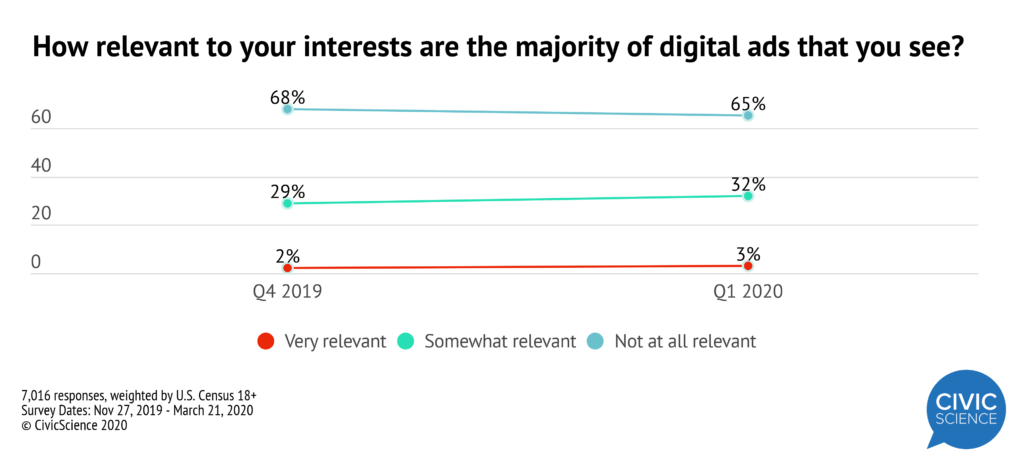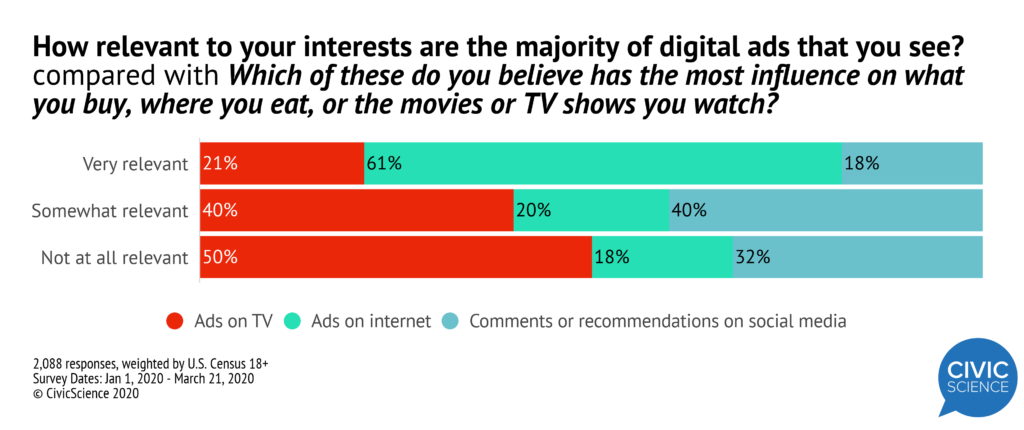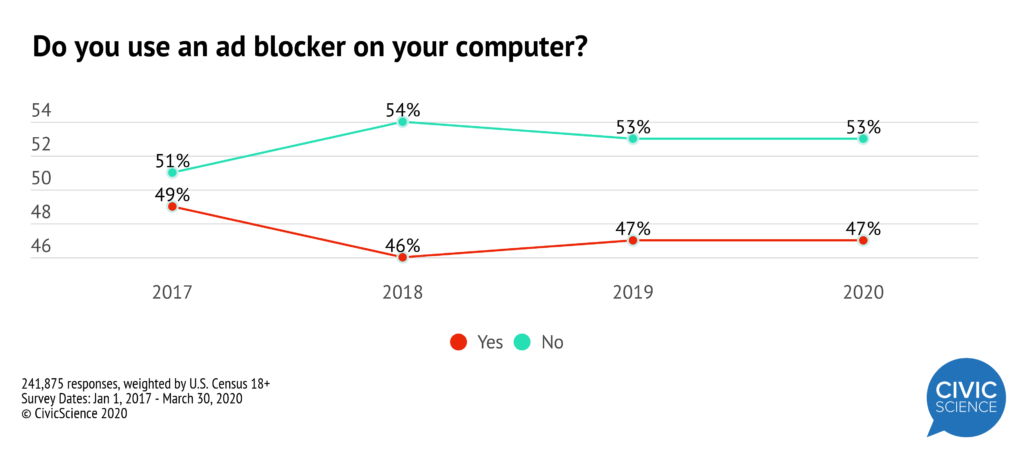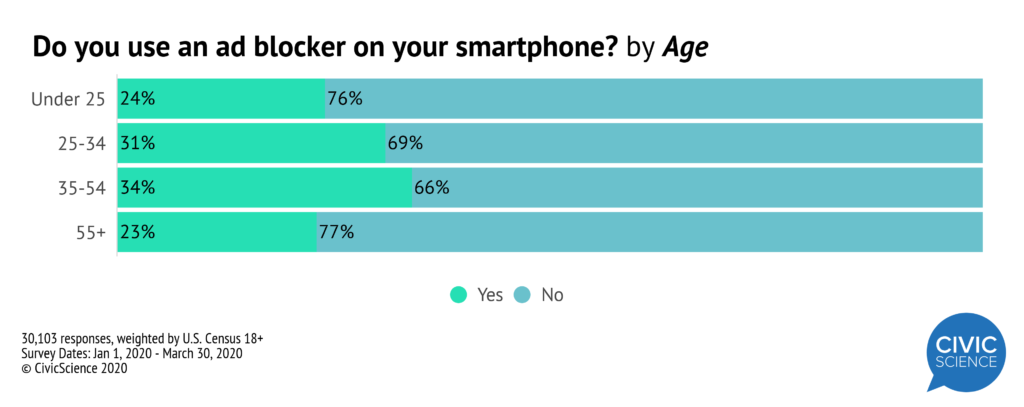You can’t go anywhere online – be it a website, email, or social media – without seeing some sort of digital ad. In fact, research predicts that digital advertising accounts for the majority of total advertising in the U.S. Yet, to what effect?
CivicScience checked in on how the general population feels about the advertisements they see. Just how relevant are digital ads to most Americans? The study has found that though the majority of digital ads are consistently irrelevant to many Americans, there has been a slight change in the Q1 2020 numbers.
Overall, it looks like lack of relevancy has decreased since a Q4 2019 study of the same survey question. Since then, ‘somewhat relevant’ has risen among American adults 18+ by three percentage points.
The study shows that in 2020, younger generations, specifically Gen Z adults, are showing the highest percentages of ad relevance compared to their counterparts.
The study also revealed that women are more likely to report seeing relevant ads than men are, by a not-so small margin.
The change in relevance may have to do with social media use. CivicScience has observed a huge uptick in TikTok usage just in the past two to three months. Use of TikTok among those under 35 is at about 27% of the demographic. It also just so happens that TikTok users report the highest relevance of ads overall compared to the other ‘big three’ social media apps. This of course could have to do with the younger age groups, but the data is loud and clear.
Twitter came in second behind TikTok for ad relevancy among users at 52%, followed by Instagram and Facebook at 48% and 39% respectively.
Ads in the Age of COVID-19
What about right now? Are current ads running during a global pandemic coming across as more or less relevant than usual to most Americans?
Survey says: less.
To Click or Not to Click?
There’s also a change in how people are self-reporting their likelihood to click on an ad relevant to their interests. Being at least ‘somewhat likely’ to do so rose since last quarter by two percentage points.
What’s interesting (and makes sense) is people who report high levels of relevance in the ads they see also claim to be most influenced by online ads. Those who find them ‘somewhat relevant’ are most likely to say comments and recommendations they see on social media are more likely to influence them to make a purchase decision, etc. than an internet or television advertisement.
This is a no brainer as those who are more likely to find the majority of ads to be relevant are also more likely to have made a purchase due to an influencer or blogger on social media.
Blocked? Maybe not.
With the prevalence of online media, shopping, and the like comes the assumed prevalence of ad blockers. However, according to CivicScience data, ad blocker use has barely budged in the past three years. Nearly half U.S. adults do not use an ad blocker on their computer (47% do as of 2020 aggregated data) and the number of people who use them on their smartphones is even smaller (29%).
Gen Z and Boomers are the least likely to be using an ad blocker on their smartphones and computers. It’s no wonder, then, that Gen Z is most likely to see relevant ads: they’re not blocking them. Older people may just not be looking and also may not be the most likely to be targeted as the most likely buyers.
With younger generations being more swayed by digital ads, and less likely to use ad blockers, digital advertising ROI is likely to grow as the generation does. CivicScience is studying this, and thousands of other trends and topics 24/7.











